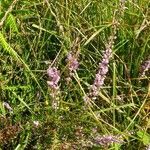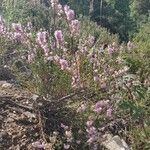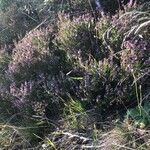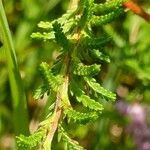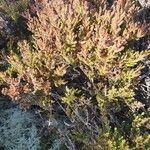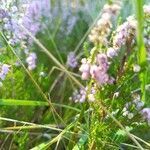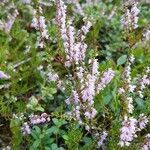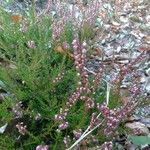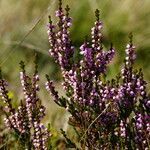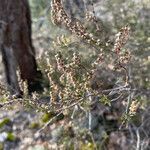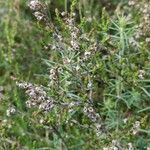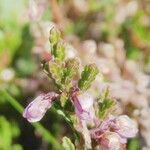Shrubs 15-60(-100) cm. Leaves widely spaced on leading shoots, closely spaced and imbricate on later shoots; blade oblong-lanceolate to ovate-lanceolate, 2.5-3.5 × 0.5-0.7 mm, base auriculate-clasping, surfaces glabrous, keeled abaxially, concave adaxially. Pedicels: bracteoles 6-8 (4 distalmost simulating sepals). Flowers: sepals exceeding corolla, pinkish purple to white, petaloid, 3-4 mm; corolla pinkish purple to white, lobes 2(-3) mm; filaments glabrous; anthers 1 mm. Capsules 1-2 mm, hairy. Seeds 0.5-0.7 × 0.2-0.3 mm. 2n = 16.
A shrub 10-60 cm high. It spreads 10-75 cm wide. It is evergreen. The leaves are in overlapping pairs. The are in opposite pairs and look like scales. The leaves turn brown or dull purple in winter. The flowers are small and bell shaped. They can be white, pink, red or purple. They occur in dense clusters. There are many named varieties.
Ascending shrub to 1 m; lvs lance-oblong; 2–4 mm, sessile, the larger auriculate; cal 3–4 mm; 2n=16. Widespread in Europe; naturalized in sandy places along the coast from Nf. to N.J. and rarely inland. July–Sept.
